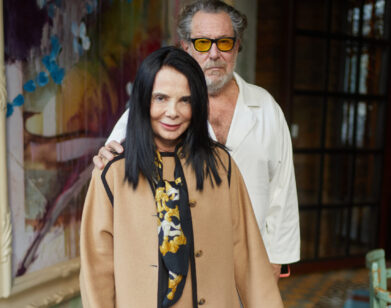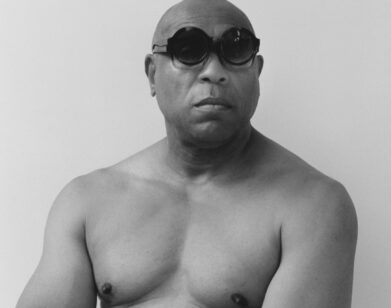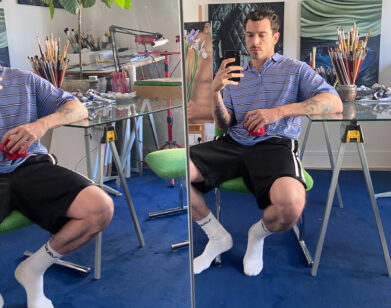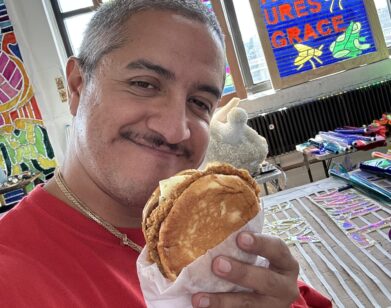ANDREW RUSSETH
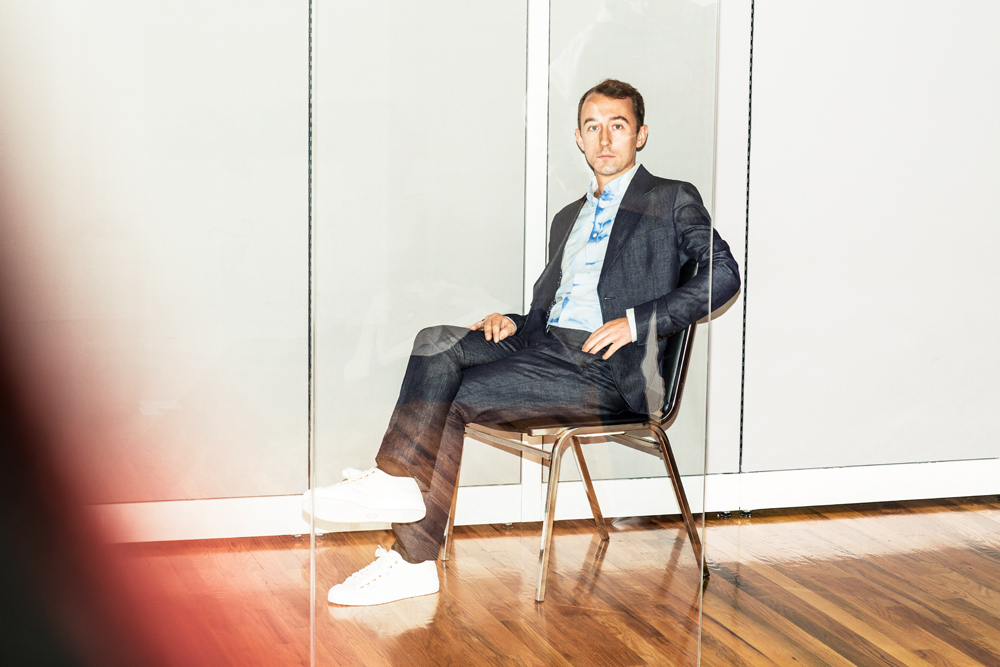
CRITIC ANDREW RUSSETH AT THE ARTNEWS OFFICE IN NEW YORK, OCTOBER 2014. SUIT AND SHOES: GUCCI. SHIRT: BOTTEGA VENETA. STYLING: ANDREAS KOKKINO. STYLING ASSISTANT (THROUGHOUT): DEVIN HERSHEY.
You are currently the co-executive editor of ARTnews. On average, how many shows do you see per week?
About 40.
How many do you write about?
Usually two or three. I write about art that knocks me over because it seems new and strange and different from anything that anyone else is doing. My goal is to get people to look at and think about work that is not getting enough attention. I want to get bodies through the doors, basically. And then, on occasion, if a positive consensus is forming around something that strikes me as not so interesting or pernicious, I want to jump in and try to change minds.
What’s the most exciting thing you’ve seen in art in the past year?
There’s a lot of dross out there, but also so many things to get pumped about. The most exciting single work was probably Jordan Wolfson’s animatronic stripper in his show at David Zwirner, which he developed with Hollywood specialists. It was horrifying and oddly sexy, and felt like the work of someone gleefully, ruthlessly brushing aside the rules, birthing something new.
The most boring/imbecilic/tired?
The disheartening conservatism that reigns supreme in such a large percentage of shows. There are millions of artists in the world, and only a few are lucky enough to get shows in major New York galleries. Why play it safe? Like a lot of people, I think the vogue for wan abstraction is particularly sad, a waste of time and money.
What is the biggest reaction that you’ve received from a review you’ve written?
The negative reviews always generate the most dramatic, and generally supportive, responses. (The art world is a dark place.) After panning a young and very commercially successful painter last fall, I received a number of almost disturbingly enthusiastic e-mails, including one from the artist’s former art teachers, which made me wince a bit.
Is there any young artist you’re banking on for the long run?
Too difficult to pick, and too many to name, but ten whom I am rooting for are Gina Beavers, Anicka Yi, Sam Anderson, Lena Henke, Amy Yao, Sam Pulitzer, Avery Singer, Kevin Beasley, Nicholas Buffon, and Ian Cheng.
Any artist you’ve changed your mind dramatically on?
Also too many to name and too embarrassing to get into. But here’s one: I’m particularly sorry about hating Wade Guyton’s work for so long. I thought it was too easy and boring. Now I think it’s pretty dark, whip-smart, and even funny. I’m just part of the fan club.
Does contemporary art reflect society? Does it have a larger society value?
I’m with the artist Hans Haacke, who likes to quote Hans Magnus Enzensberger: “Culture is a little like dropping an Alka-Seltzer into a glass—you don’t see it, but somehow it does something.” Contemporary art’s impact on society is mysterious, sneaky, and probably very minor (particularly compared to fields like medicine and politics, or even television), but those are all things that I love about it. The stakes seem pretty low, so why not engage with it really intensely, fight about it, and see what happens?


